A little over a year ago, I came up with an idea for story to turn my apartment into an indoor garden. This ended up being a terrible idea, though in my defense it was late January, and I was hoping the addition of greenery could inject some vitality back into those bleak, dreary days, while also serving as a way to check out the burgeoning plant tech scene.
So after some initial planning, inspired by companies like Square Roots and AeroFarms, I decided that if I’m going to transform my 600 square-foot apartment into a mini urban jungle, those plants should at least have some utility other than being decorative. Why not grow something I could eat?
Over the next few months, I reached out to a number of companies that make indoor gardening gadgets including Click and Grow, AeroGarden, Veritable, and Replantable (which has since sadly gone out of business) to test a range of different products—from small tabletop devices to large cupboard-sized installments.

And as review devices started arriving to our office, I realized how I had made my first mistake—highlighting the hassle of my bad idea. As a city dweller, I don’t own a car or a truck or even a wheelbarrow, so trying to lug boxes throughout the city on public transportation turned into a comedy of errors. I was shuttling planters to my apartment one-by-one, until I got tired and impatient and paid $40 for Uber to take me from work to home, despite a normal subway fare costing just $2. That was strike #1.
After finally getting all the various gadgets home, setup was actually quite simple. For most of the smaller automated planters, all you have to do is attach the system’s growing lights, which are typically positioned at the end of an adjustable arm above the planting surface. Then you just fill the planter with water and that’s it. Some of the larger planters likeAerogrow’s Farm Plus require some extra at-home assembly, but thanks to the kit’s included instructions and Allen wrench, putting it together only took about an hour. If you can assemble Ikea furniture, indoor planters don’t pose much of a challenge.
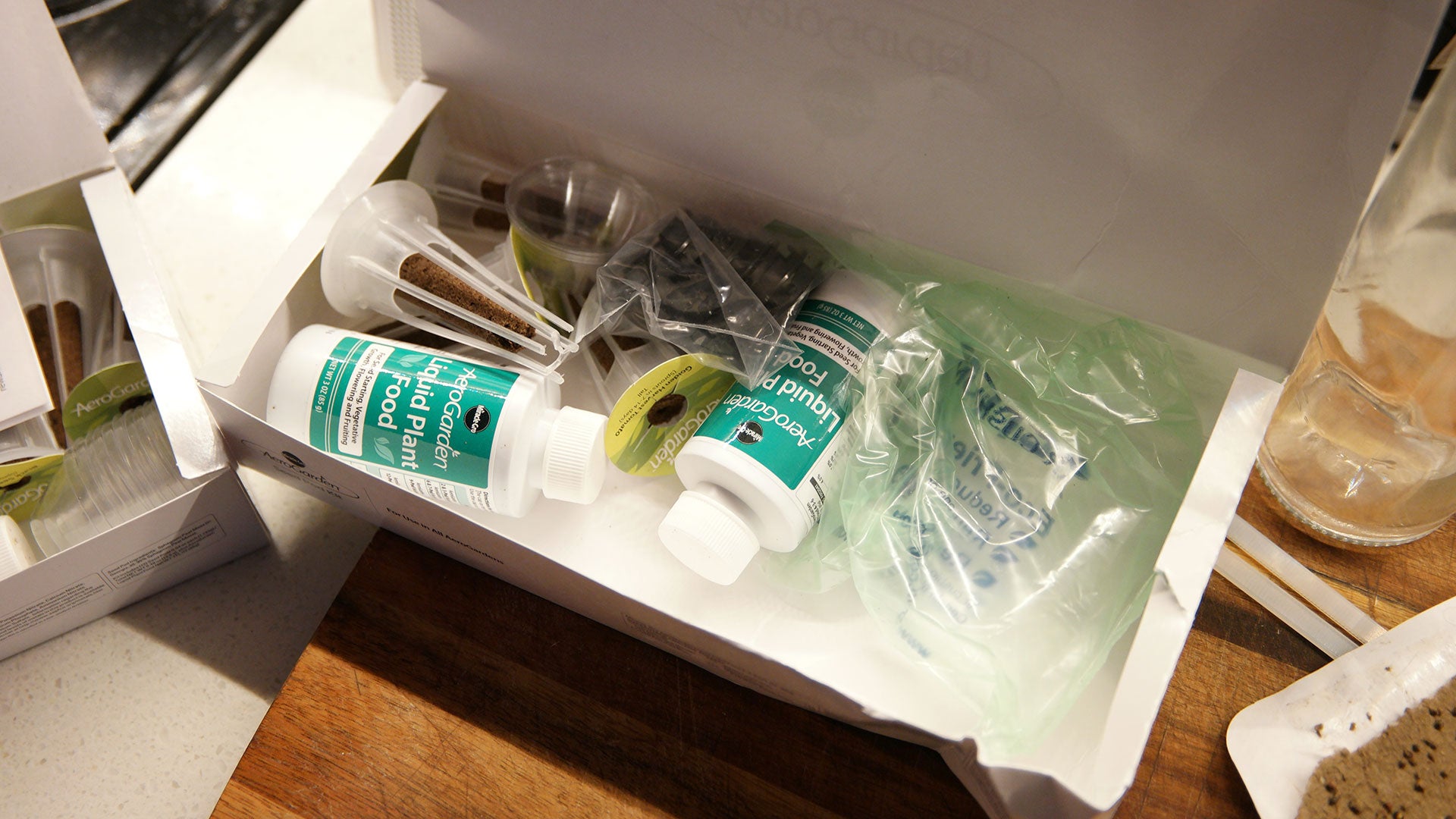
Once everything was set up, there was a wealth of herbs and veggies to choose from, with the only main limitations being the size of the planters and the final size of my harvest. That makes a lot of common herbs like basil, thyme, rosemary, and even small peppers and cherry tomatoes a great choice for smaller tabletop planters, leaving things like lettuce and or other large leafy greens to the bigger systems. But if you’re thinking about growing some indoor pumpkins, think again.
The downside to much of this is that similar to K-Cups for coffee, almost every planter system sort of forces you to use their proprietary seed pods, which aren’t interchangeable and depending on the company, may only be available from a handful of retailers. This locks you into a company’s system, and when your current plants eventually die, the only way to start a new cycle is to purchase a new batch of seed pods from the company that made the planter to the exclusion of pretty much anyone else.
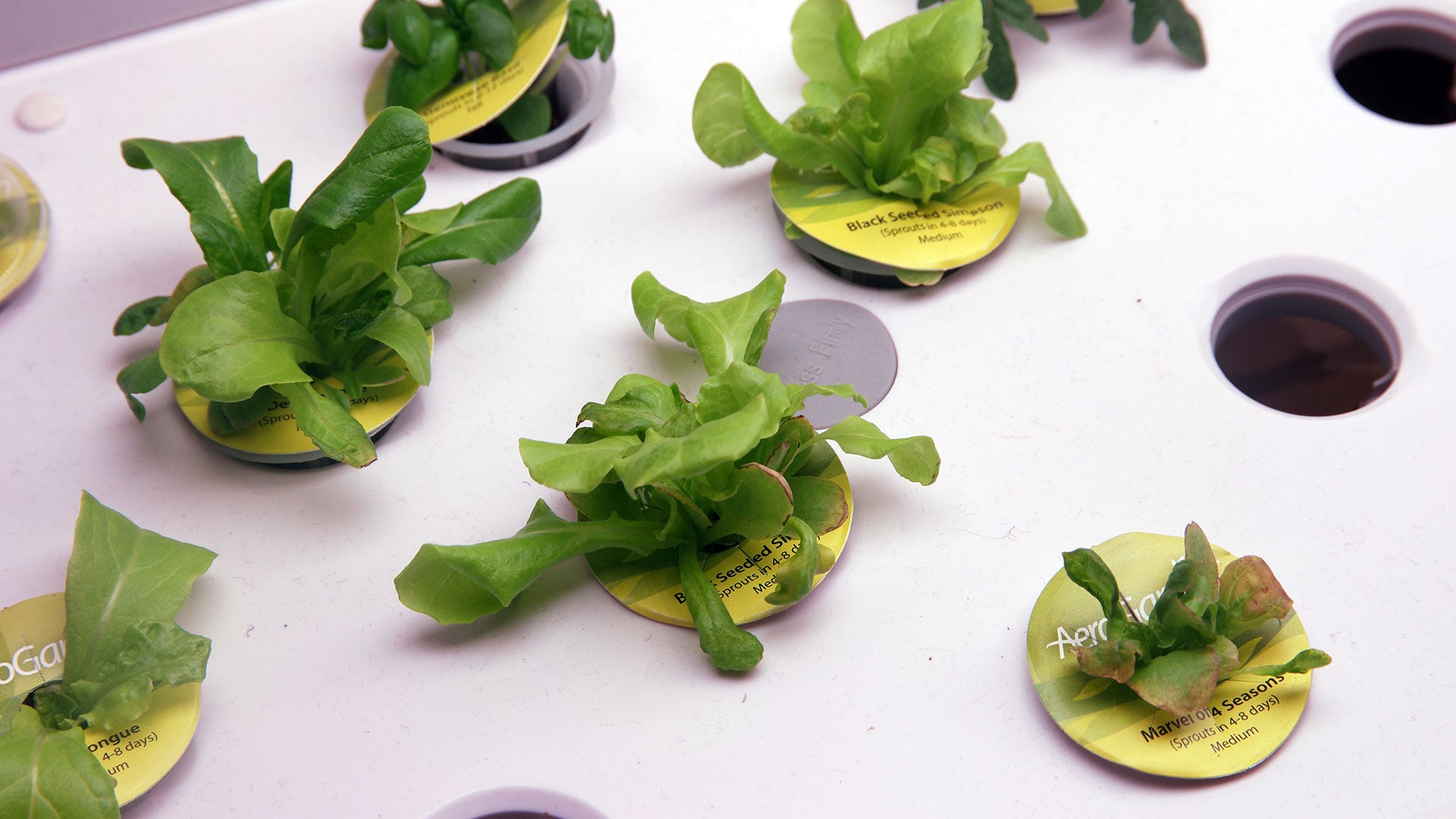
While it is possible to engineer your own pods for use in the planters, the time and energy it would require to do that generally means you probably would have been better off avoiding these indoor planter systems in the first place. And with packs of three pod kits generally going for $4 to $6 a piece or more (versus pennies for an equivalent amount of of seeds, dirt, and fertilizer), the long-term costs of tech-assisted indoor gardening can get quite expensive quickly. Strike #2.
Still, I forged ahead, getting five different systems up and running, and while it wasn’t exactly a surprise, pretty much everything I planted thrived, quickly transforming the seed pods from lifeless hunks of brown dirt into a bounty of herbs and veggies.
 This was by far the most satisfying part of the process as basil, thyme, parsley, lettuce and even tomatoes flourished with practically no input or effort on my behalf. The only things that seemed to struggle was a lonely pod of chives and a bit of Thai basil, which grew significantly slower and less vibrant than anything else I planted. The planters basically took care of themselves, only occasionally requiring attention to replenish things like water or in some cases, included liquid fertilizer. It was all easily monitored using water bobbers or built-in displays. Each planter delivered on the set-it-and-forget promise that so many people dream about it.
This was by far the most satisfying part of the process as basil, thyme, parsley, lettuce and even tomatoes flourished with practically no input or effort on my behalf. The only things that seemed to struggle was a lonely pod of chives and a bit of Thai basil, which grew significantly slower and less vibrant than anything else I planted. The planters basically took care of themselves, only occasionally requiring attention to replenish things like water or in some cases, included liquid fertilizer. It was all easily monitored using water bobbers or built-in displays. Each planter delivered on the set-it-and-forget promise that so many people dream about it.
But then the reality of the situation started setting in. Even though these planters are almost totally automated, the things I couldn’t control turned into headaches and then migraines. Some planters like the Veritable and the Click and Grow 3 are so streamlined, they don’t even come with on/off switches. That means the only way to turn the system off is to unplug them entirely. On top of that, for systems like those that don’t have a screen, there’s no way to easily adjust the planter’s light schedule, again, besides unplugging the planter and plugging it back in.
On devices without a screen, plugging a planter in essentially tells the device to start a new day-regardless of what the actual time of day is—which can be a real hassle if you plug the device in after noon, and are then forced to deal with glowing white lights that stay on all night. At that point, you’re not that far removed from being an actual farmer who needs to wake up at sunrise just to frigging reset your techy planter’s internal clock.
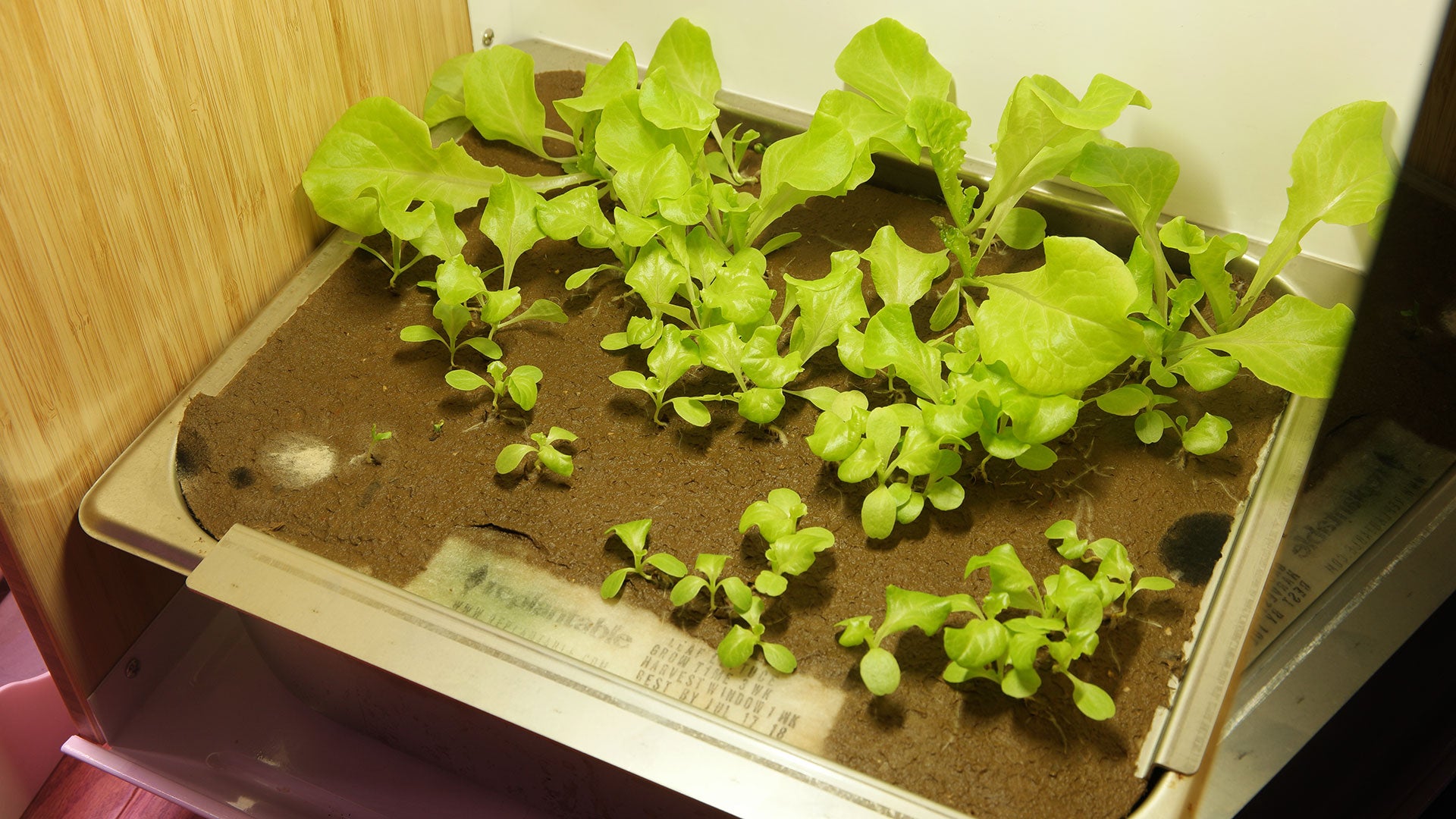
At first, this was merely a minor annoyance, but as my experiment transitioned from summer into fall and then back into winter, having all the planters lights on for 16 to 18 hours a day really messed with my circadian rhythm, especially when you consider some of the planters like the Veritable put out extra blue light. There were also the water pumps on the larger AeroGrow Farm Plus, which sounded like the Bellagio water fountain show was happening inside my apartment every few hours—seriously, you could hear the water circulation down the hall outside my apartment.
It almost felt like I was living that one Seinfeld episode about Kenny Roger’s Roasters where the light from the sign nearly drives Jerry insane. The only difference is that instead of an inescapable red hue, I was plagued by an ever-present cool white glow, which by the end, felt like a frosty demon was haunting my dreams.
By the end, even though the planters had produced a bounty of herbs that we turned into multiple batches of pesto, fresh chimmichuri, and more than a handful of delicious sweet and crispy salads, my fiancee (now wife) said they had to go. And that was strike #3. Over the course of about four months or so, my idea to cure my winter blues with some happy little greens had turned into a big bright bad idea.
Trying to set up even a small indoor farm made me feel like I was turning into the horticultural version of a cat person. Everyday, I talked to my plants, I even gave them names. My lettuce Big L held down the fort, while Benny the basil plant led my gang of plants, as it was consistently one of the verdant and fastest-growing specimens. And even with the all the tech helping out with watering and lighting, looking after the plants still consumed my thoughts. I may have even had a few dreams (nightmares?) about the plants taking taunting me and then eating me Little Shop of Horrors style.
However, at the same time, I learned a lot about what makes a good techy planter and the right way to use one. Simply trying to cram as many plants and lights into a tiny space—especially one that you live in—is an exercise in frustration and should not be attempted, no matter how delighted the schadenfreude seems to make your editor.

First, if you simply want one planter for easy-to-grow herbs like basil, get something with a screen like the AeroGarden so you can have more control over planter’s light cycles and the ability to easily turn off the light for a few hours in case you want to have people over without blinding them. Also, while they generally more expensive, if you can find a fully enclosed planter similar to Replantable which came with a tinted glass door that blocked most of its light, those are much, much easier to live with.
Second, if you’re serious about growing plants indoors, you’ll really want to have a dedicated room or space for gardening where the planters won’t disturb typical human activities like working or sleeping. As invigorating as it is to be able to smell fresh herbs anytime simply by stuffing your face in them, the planters themselves still tend to give off a certain farm funk. And at the end of a planting season, you need to give everything a thorough cleaning, which can be hard if you’re trying to make sure you don’t blow up your security deposit. Also, for people who really want to use min-max their home gardens and use more efficient red or fuchsia lighting to feed your plants, you’ll really want to keep your home and indoor garden separated, lest you too succumb to the call of Mr. Marbles.
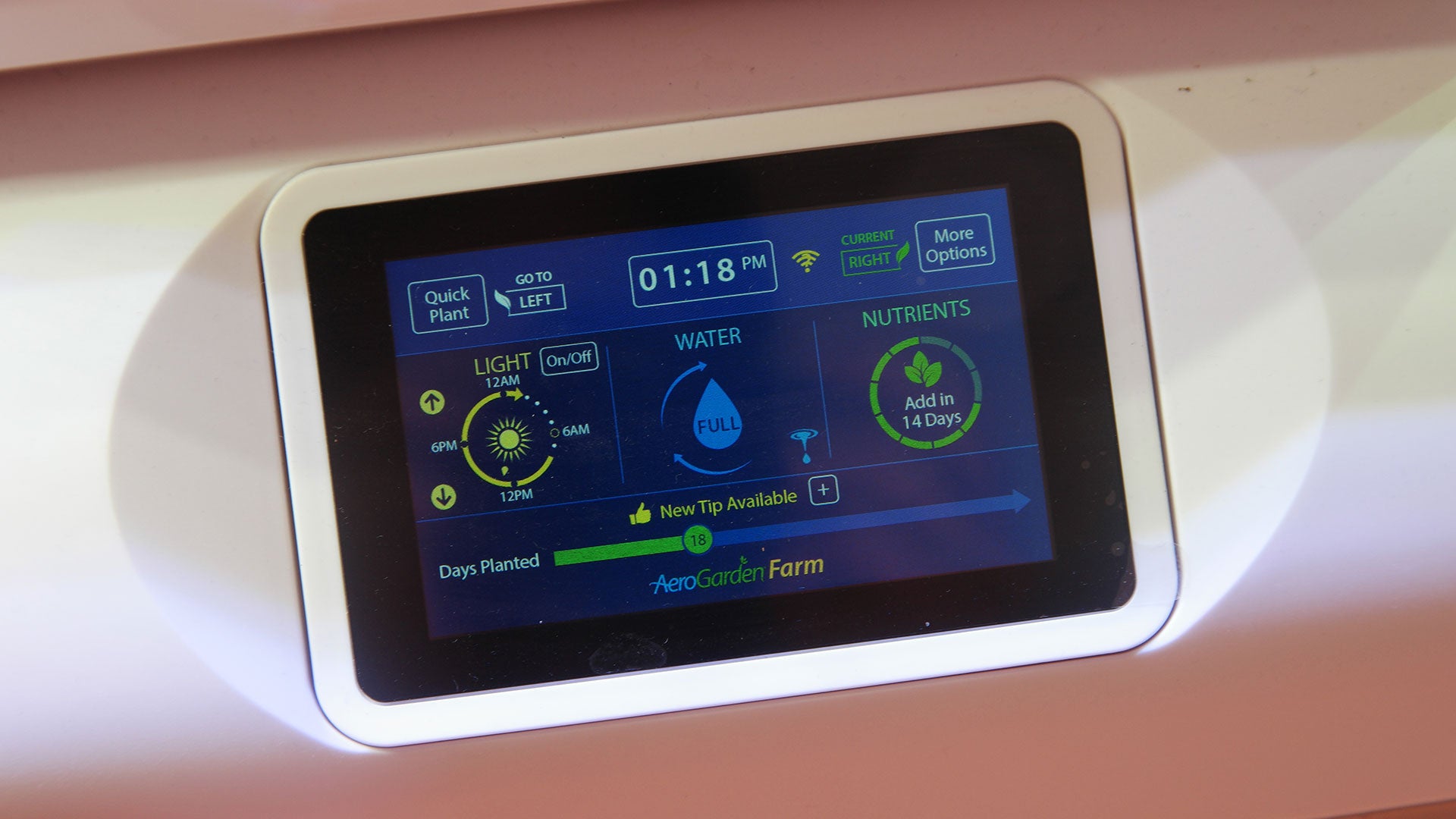
Third, while the ability to support up to three different seed pods in even the smallest planters might seem like a lot when combined with multiple devices, it’s not. It takes several weeks or even a month to get a usable amount of food from almost any plant, which means unless you have a free shipping container worth’s of planters, you’ve never going to harvest enough greens to live off of. So despite my best intentions about trying to create a personal urban farm, a typical apartment just isn’t big enough to live and grow in, that is if you want any sort of a normal life. And don’t even think about vacations of more than five days or so, these planters aren’t going to water themselves.
Finally, even without accounting for increased power usage, filling up an apartment with techy planters and their associated seed pods is a relatively pricey investment. Sure, the least expensive system from Aerogarden start at around $50, but anything with even modest capacity goes for more like $100 to $300, with larger systems topping out at $750 or $1,000. And then it’s at around $4 per seed pod or more from there.
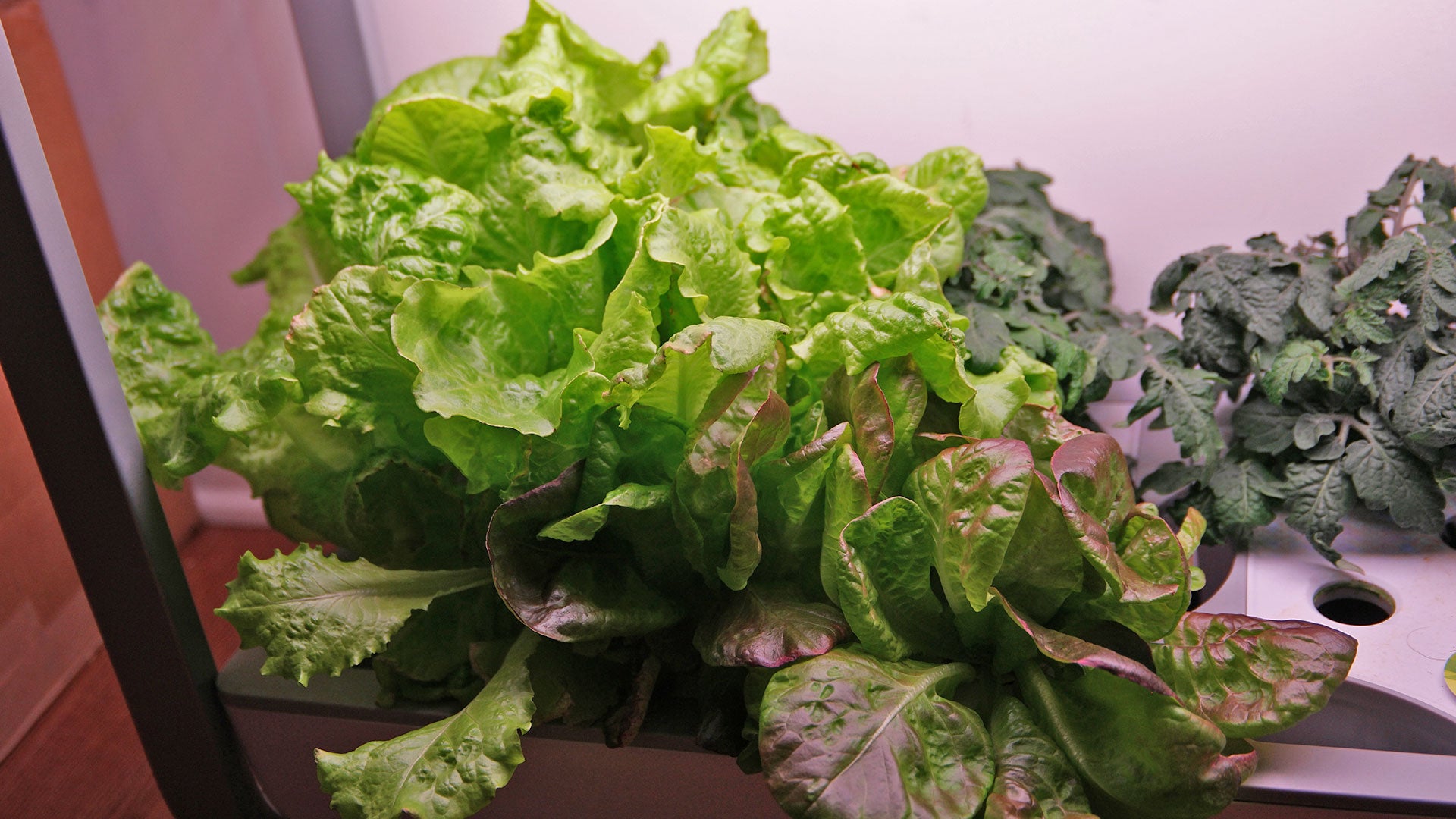
If you’re just looking to add some greenery to your abode, just throw some dirt and some indoor tolerant seeds in a clay pot, and water it from time to time. It’s just as rewarding and not that much more difficult than letting an automated planter do it for you. And if you do opt for a more sophisticated DIY solution, you won’t be stuck in limbo if any of these planter companies goes belly up.
But in the end, I have no one but myself to blame. I think my heart was in the right place, but as with a lot of things, becoming overly reliant on tech forced my to stray too close to the light.



















